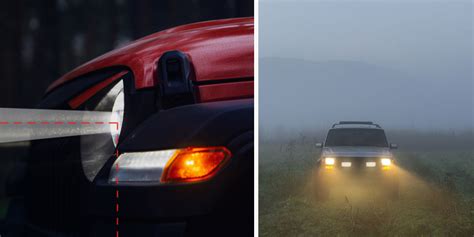How To Aim Driving Lights
Ronan Farrow
Mar 23, 2025 · 3 min read

Table of Contents
How to Aim Driving Lights for Optimal Visibility and Safety
Driving at night can be challenging, and properly aimed driving lights are crucial for safe and comfortable travel. Poorly aimed lights can cause glare for oncoming drivers, reduce your visibility, and even lead to accidents. This guide will walk you through how to properly aim your driving lights, ensuring optimal illumination and safety on the road.
Understanding Your Driving Lights
Before we get started, it's important to understand what driving lights are and their purpose. Driving lights, often auxiliary lights or fog lights, are designed to supplement your headlights, improving visibility in challenging conditions such as fog, rain, or snow. They are not meant to replace your headlights. They should be aimed to provide a broad, even spread of light, illuminating the road ahead without blinding other drivers.
Types of Driving Lights
There are several types of driving lights, each serving a slightly different purpose:
- Fog Lights: These are typically low-mounted and aimed low to cut through fog and other low-lying obstructions. They project a wide, flat beam.
- Driving Lights (Auxiliary Lights): These can be mounted higher and aimed to provide a longer-range illumination than fog lights. They often offer a more focused beam than fog lights.
- High-Beam Assist (Adaptive Headlights): Many modern vehicles feature automatic high-beam assist which adjusts high beams to avoid blinding oncoming traffic. This technology is highly effective, but still needs proper alignment of the standard headlights for effective illumination when not in automatic mode.
Steps to Aim Your Driving Lights
The process for aiming your driving lights varies depending on the type of light and your vehicle's design. However, the general principles remain the same. Here's a step-by-step guide:
1. Preparation is Key
- Find a Suitable Location: You'll need a flat, vertical surface, such as a garage door or wall, positioned at least 25 feet away from your vehicle.
- Park Correctly: Park your vehicle on a level surface facing the wall. Ensure your tires are properly inflated and the vehicle is stable.
- Measure the Height: Measure the height from the center of your headlight to the ground. You'll need this measurement later.
- Mark the Wall: Use painter's tape to mark the center point on the wall at the same height as your headlight.
2. The Aiming Process
- Turn on Your Driving Lights: Turn on only the driving lights you intend to aim. Turn off all other lights, including headlights.
- Adjust the Aim: Most driving lights have adjustment screws located either on the back or sides of the light housing. Use these screws to adjust the vertical and horizontal aim of the light beam.
- Check the Beam Pattern: Observe the beam pattern projected onto the wall. The beam should be even and spread across a wide area, without any harsh glare or significant hotspots.
- Iterative Adjustment: Adjust the screws incrementally until you achieve the desired beam pattern. This often involves several iterations of adjustment and observation.
Important Note: The ideal aim depends on the type of driving light and local regulations. Consult your owner's manual for specifics related to your vehicle.
3. The Final Check
Once you're satisfied with the beam pattern, perform a final check in a safe, open area. Drive your vehicle and observe the illumination of the road ahead. If you are still not comfortable with the light pattern, seek professional help from a mechanic or automotive technician.
Maintaining Optimal Driving Light Aim
Over time, the aim of your driving lights can shift due to bumps and vibrations. Regularly check the aim of your driving lights and readjust them if necessary. This is especially important after any work or repair on your vehicle's suspension.
By following these steps, you can ensure your driving lights are properly aimed, providing the optimal visibility and safety needed for nighttime driving. Remember, properly aimed lights are a crucial aspect of safe driving practices. Stay safe, and drive carefully.
Featured Posts
Also read the following articles
| Article Title | Date |
|---|---|
| How To Buy Raccoon | Mar 23, 2025 |
| How Much Is Emmitt Smith Football Card Worth | Mar 23, 2025 |
| How Much Is It To Start A Construction Company | Mar 23, 2025 |
| How Much Is Lice Removal Service | Mar 23, 2025 |
| How To Apply For Homestead Exemption In Louisiana | Mar 23, 2025 |
Latest Posts
-
How Many Drip Emitters Per 1 4 Line
Apr 07, 2025
-
How Many Dogs Does It Take To Change A Lightbulb
Apr 07, 2025
-
How Many Does A 3 Foot Hero Feed
Apr 07, 2025
-
How Many Diamonds In A Tennis Bracelet
Apr 07, 2025
-
How Many Deer To Feed A Family For A Year
Apr 07, 2025
Thank you for visiting our website which covers about How To Aim Driving Lights . We hope the information provided has been useful to you. Feel free to contact us if you have any questions or need further assistance. See you next time and don't miss to bookmark.
